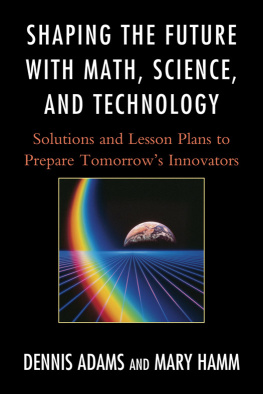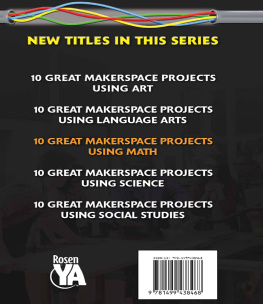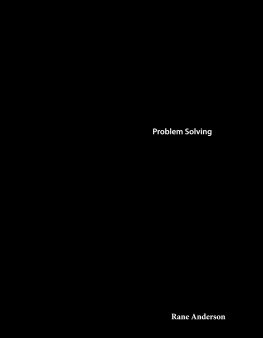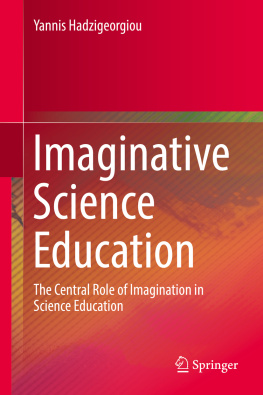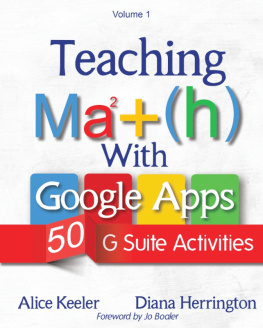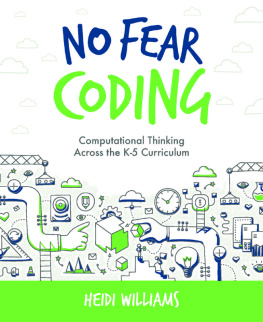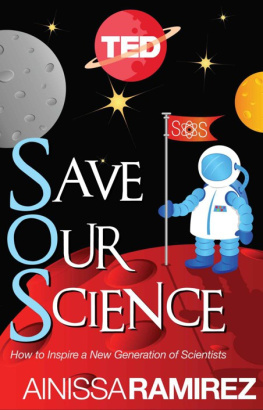CHAPTER 1
Innovation and Differentiation
Twenty-First-Century Math, Science, and Technology Skills
If our schools can ignite sparks of student creativity in association with math, science, and technology lessons, the result is likely to release a mix of innovative ideas and content understanding. Such a combination of imaginative twenty-first-century skills and related intellectual tools is the key to shaping a productive future.
Knowledge of the past can help, but what has already happened is more like a static map that stops at the present. Its not a compass pointing in the right direction. Still, even though events tend to trump trends, we can extend the best ideas available today in a way that gives us some tantalizing hints of future possibilities.
As far as quality schooling is concerned, chance and surprise events have always favored the prepared mind. Now, as in the past, academic success depends on a quality curriculum, student commitment, and highly skilled teachers. How do we recruit and retain good teachers? One way is to look at the competition. In the most academically successful countries, teachers are recruited from among the best college graduates, trained well, paid well, and highly respected.
What about curriculum construction? It begins by determining what we want students to know and be able to do. Some American students do well no matter what. The challenge is making sure that all students are motivated and engaged in deep learning.
Treating learners as uniformly passive recipients of information simply wont get the job done in todays environment. Getting everybody willing and able to work up to high standards requires recognition of the fact that learning is more natural and effective when students are not served a one-size-fits-all curriculum.
Differentiated instruction (DI), standards-based lessons, and innovative behavior are compatible with the reality of up-to-date work in math, science, and technology. DI is built on the belief that students have different needs and that every student in the classroom can imaginatively approach any subject.
PROMOTING INNOVATION IN A DIFFERENTIATED CLASSROOM ENVIRONMENT
To differentiate instruction is to recognize students varying backgrounds, knowledge, readiness, and learning preferences. The next step is making sure that there is some variation in content, process, and/or product. By content we mean multiple paths for taking in information; process is viewed as multiple options for making sense of ideas; and product looks at multiple options for expressing what has been learned. As this structure suggests, differentiated math, science, and technology lessons can be designed in a way that nurtures the innovative spirit.
A differentiated approach to instruction is guided by the idea that schools should extend individual potential and help students to grow as much and as quickly as possible. Unlike some individualized learning approaches, differentiated instruction often happens in small groups with similar interests.
The diversity of thinking within small groups can amplify the innovative ideas generated by individual students. As students collaborate, they can take more responsibility for what they are doing. And they can help each other master content lessons based on learning goals and curriculum standards.
The advance of cognitive learning theories has led educators to realize how important it is for learners to be more actively engaged in the construction of knowledge. As far as innovation itself is concerned, the process begins with creating new ideas in the right environment. Students attitudes and beliefs are crucial.
Creativity and innovation can build on questioning, trusting, taking risks, being open to new ideas, and having patience. Being able to ask questions that havent been asked before certainly helps, so does recognizing the fact that innovation can be radical or incremental changes in thinking, in processes, in technology, or in services. Changes in thinking, in processes, in technology, or in services involving innovation can be either radical or incremental. Along the way, it always helps if there are time and space for reflection, experimentation, and the collaborative generation of new ideas.
Problem solving in math and inquiry in science are good examples of creative processes by which questions are asked, evidence is gathered, and investigations are carried out. When it comes to technology, the basic idea is to make the world more creative, expressive, empathetic, and interesting. Technology education goals include improving the human conditionnot escaping it.
Along with developing explanations and making predictions, innovative skills can help students generate a set of interrelated processes that they can use to investigate phenomena and imaginatively think about real-world problems.
By using digital tools and taking part in mathematical and scientific problem solving, learners can acquire knowledge and develop an understanding of new concepts, models, and theories. For students to understand any academic field, they must learn about the purposes, methods, and thoughtful behaviors associated with these subjects. This implies frequent opportunities to inquire into their own understandings, while learning how to think and work in a way that mathematicians, scientists, and technology experts do.
Understanding interrelated concepts, interpreting explanations, and evaluating evidence are all part of nurturing the innovative process. Helping students become creative and innovative problem solvers is now viewed as an important goal of mathematics, science, and technology instruction. Engaging in tasks before the method of solution becomes clear often results in the development of new knowledge.
The world is an interdisciplinary set of problems out there to explore. Solving a problem often requires finding a way around an obstacle or getting past some difficulty to experience the joy of discovery. To become skillful at this, students need frequent opportunities to formulate, work with, and solve complex problems. The process requires a high degree of student effort and time to allow students to reflect on their own thinking.
Inquiry might be thought of as the use of the processes of science, scientific knowledge, and attitudes to reason and think critically. It is an approach that uses scientific, mathematical, and technological tools to study the natural world and communicate the results to others.
Problem solving is at the core of math instructionand inquiry plays the same role in science. Both motivate learners and help them understand the nature of math, science, and technology and how these subjects impact their lives (Bass, Contant, & Carin, 2008).
Problem solving, inquiry, and innovative reasoning are natural allies. All involve questioning conventional wisdom and seeking out evidence. We must all recognize that insights are more than personal opinion; points of view must be backed up with evidence and good reasons. Its not just using data and information to support a facts-based argument. Its also important to go beyond the discovery of new facts and discover new ways to think about them.
PUTTING THE INNOVATION PIECES TOGETHER
Innovation has a lot to do with the creation of new ideas, approaches, or services. It might also involve transforming an idea or invention into a problem-solving device, process, product, or technique. Uniqueness and novelty are frequent associates.
Intellectual curiosity often inspires the discovery potential and possibilities that others have overlooked. Also, having the curiosity to ask why something works and how something can be done in a different way is a constant part of the process.

